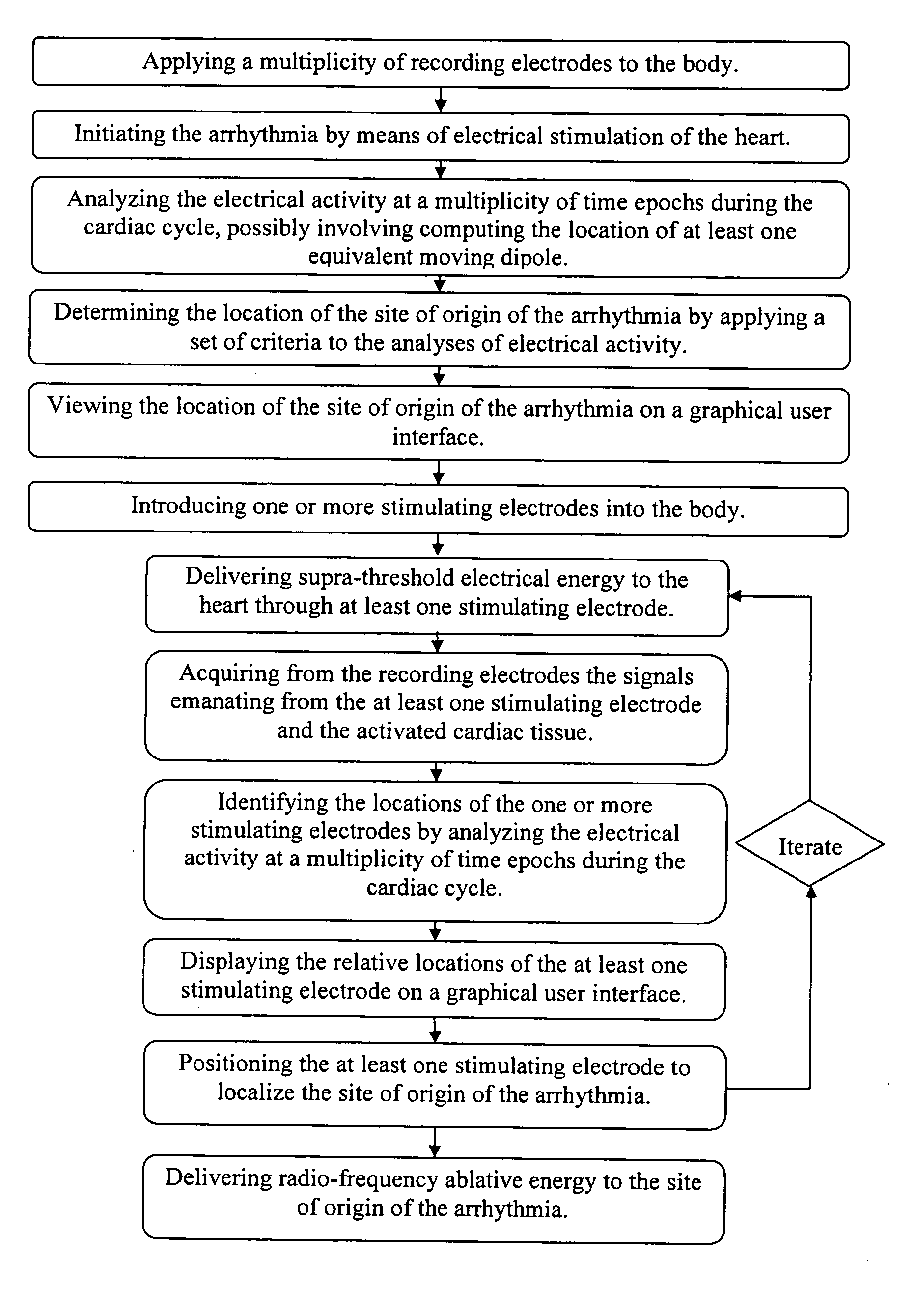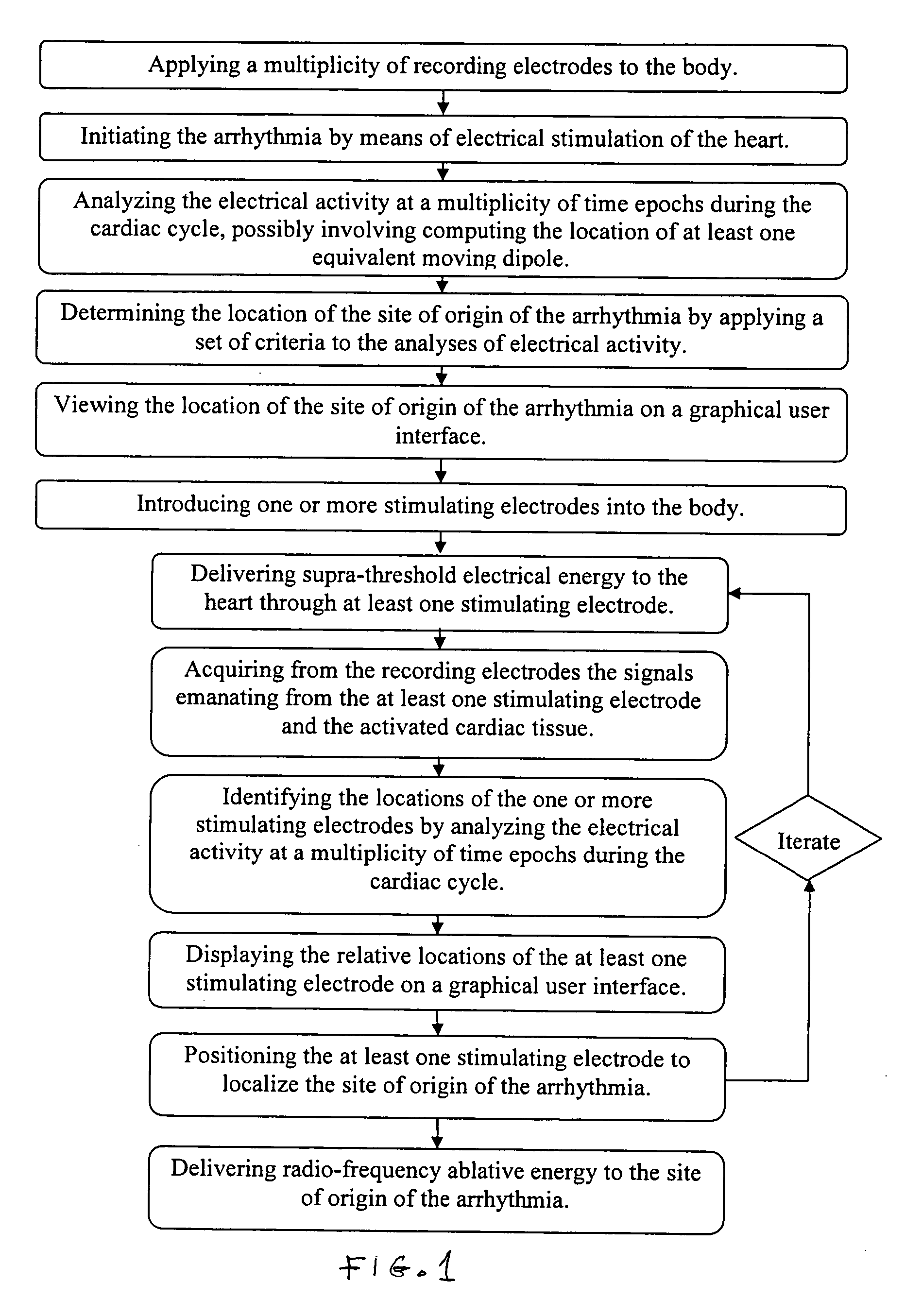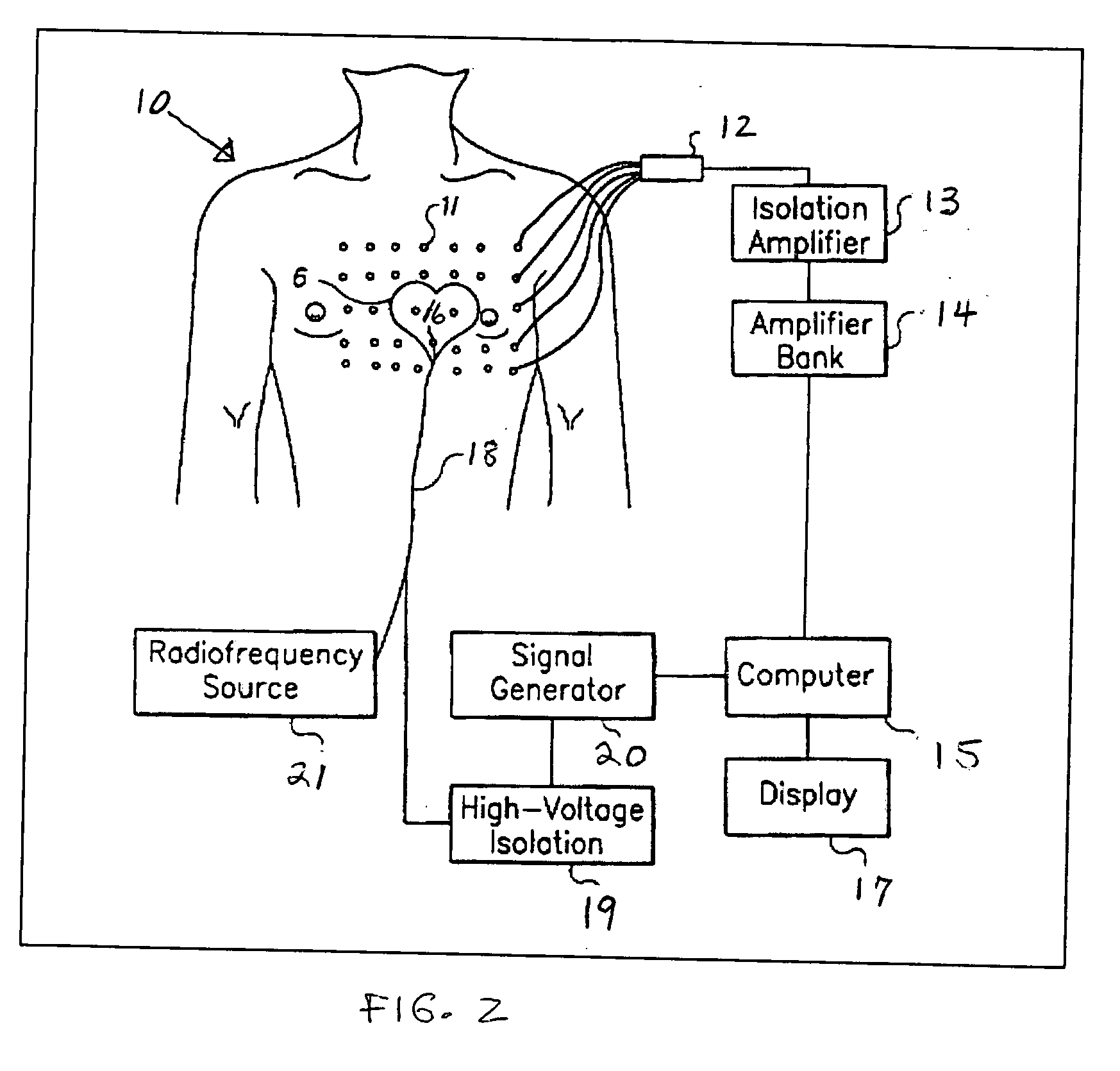Method and apparatus for the guided ablative therapy of fast ventricular arrhythmia
a ventricular arrhythmia and guided ablative therapy technology, applied in the field of guided ablative therapy, can solve the problems of morbidity and mortality in the developed world, abnormal cardiac and brain electrical conduction processes, and difficulty in ventricular tachycardia ablation
- Summary
- Abstract
- Description
- Claims
- Application Information
AI Technical Summary
Benefits of technology
Problems solved by technology
Method used
Image
Examples
Embodiment Construction
[0029] Previous patents (U.S. Pat. Nos. 6,308,093 and 6,370,412 discussed above) have described a method by which the electrical source of low-frequency electrical activity (such as a slow ventricular tachycardia) within the body can be localized and ablated. However, the ablation catheter tip cannot be accurately guided in the manner described in previous patents in the presence of a rapid arrhythmia (such as in cases of fast ventricular tachycardia, >240 beats per minute).
[0030] In previous methods, low-amplitude sub-threshold bipolar current pulses are delivered from an electrode at the tip of the catheter. The signals at the body surface result solely from the weak electrical fields set up in the body by the bipolar pulses. These surface signals are fitted with a moving dipole model to determine the relative location of the stimulating electrode within a given short time epoch. Thereafter, the processes of delivering electrical energy and determining the relative location of th...
PUM
 Login to View More
Login to View More Abstract
Description
Claims
Application Information
 Login to View More
Login to View More - R&D
- Intellectual Property
- Life Sciences
- Materials
- Tech Scout
- Unparalleled Data Quality
- Higher Quality Content
- 60% Fewer Hallucinations
Browse by: Latest US Patents, China's latest patents, Technical Efficacy Thesaurus, Application Domain, Technology Topic, Popular Technical Reports.
© 2025 PatSnap. All rights reserved.Legal|Privacy policy|Modern Slavery Act Transparency Statement|Sitemap|About US| Contact US: help@patsnap.com



